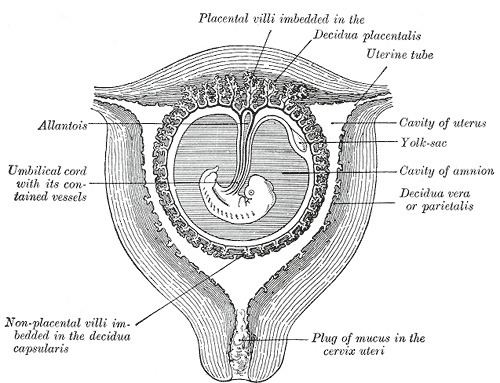 | ||
The decidual reaction is the set of changes in the endometrium of the uterus that prepare it for implantation of an embryo. These changes atre observed in each menstrual cycle and enhanced after implantation. These changes include swelling of stromal cells due to accumulation of glycogen and other nutrients. These nutrients help the embryo survive the initial days before the placenta is fully developed, which then establishes a channel for fetus nutrient exchange.
The decidual reaction is seen in very early pregnancy in the generalized area where the blastocyst contacts the endometrial decidua. It consists of an increase in secretory functions of the endometrium at the area of implantation, as well as a surrounding stroma that becomes edematous.
The decidual reaction occurs only in a few species such as humans. The decidual reaction and decidua are not required for implantation. Evidence can be taken from the fact that in ectopic pregnancy, implantation can occur anywhere in the abdominal cavity. Even after hysterectomy some women have become pregnant.
